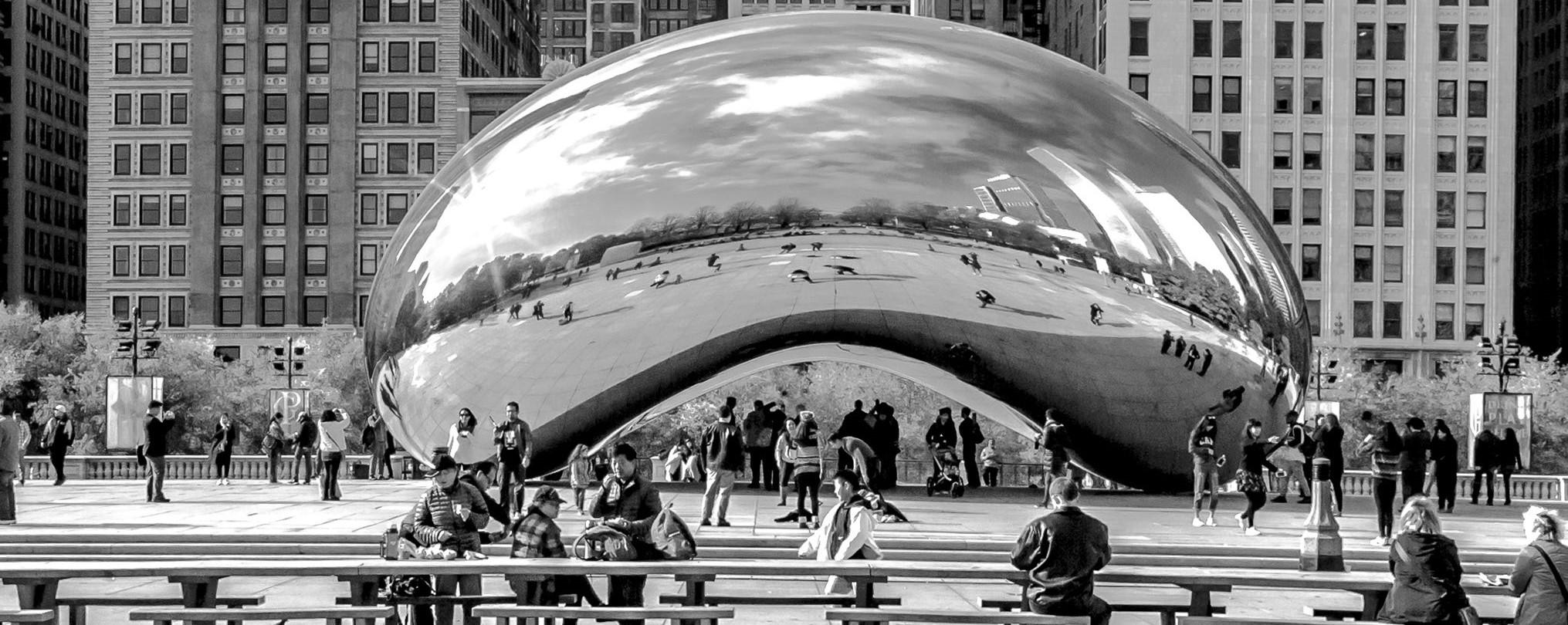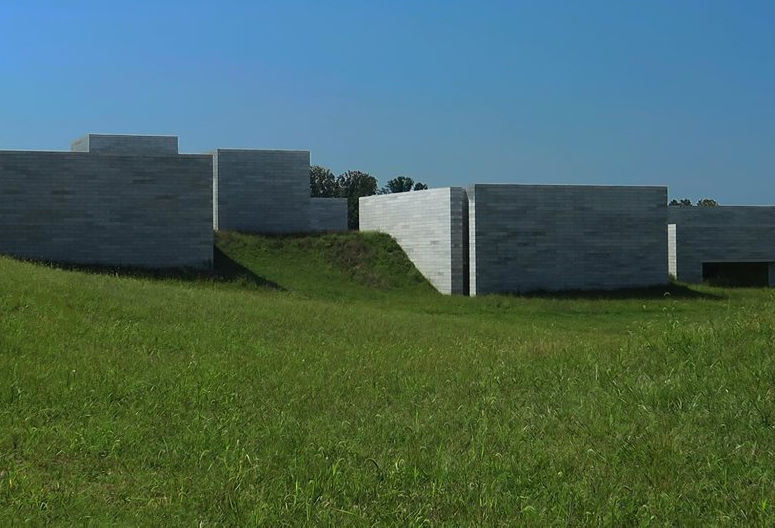2022 was an unusually strong season for the aficionado of books on architecture and design. Perhaps it was because the years of the pandemic and its recovery gave authors time to think and write – though certainly there was no slowdown in work or billings for most architects. Whatever the reason, there’s been a rush to quality in tomes that cover new work, updated ideas, and resurrected thinking about concepts from the past. We’ve chosen seven published and reviewed in these pages in 2022, plus our own perennial favorite. Any or all will make terrific gifts for the design lover on your list:
First up is Blair Kamin’s “Who Is the City For? Architecture, Equity and the Public Realm in Chicago,” with photography by his former Chicago Sun-Times competitor, Lee Bey. It’s Kamin’s third in a trilogy of column collections from the Chicago Tribune Trib, all written over a 30-year career there.
In this book, Kamin explores his belief that the definition for equity in architecture and urban design needs to be expanded. Typically, he says, equity’s thought of as fair treatment for people and neighborhoods that have gotten the short end of the stick. It has another meaning, too, one that’s financial – as in shares of stock.
But he wants equity to include the spaces we share – in fair treatment for historically disadvantaged neighborhoods, and in upgrading the public realm. “It’s a more valuable and realized definition,” he says. “It’s not just helping people on the poor side of town, but to accrue to benefit all of us.”
Order it here.
There’s Marlon Blackwell’s “Radical Practice: The Work of Marlon Blackwell Architects.” It’s a new monograph out from Princeton Architectural Press, and within its 510 pages are 13 projects by the 2020 recipient of the AIA Gold Medal. Also included are a number of essays by architects, artists, landscape architects and Tim Hursley, whose photographs illustrate the firm’s work. Among those who contributed essays to the book are Tod Williams and Billie Tsien, architects of the Obama Presidential Center; Maurice Cox, Chicago’s city planning director; Thom Mayne, winner of the 2005 Pritzker Prize; and James Corner, landscape architect of the High Line. One of the most descriptive essays is by North Carolina architect Frank Harmon, who’s also the author of “Native Places.”
Order it here.
And Monacelli’s “Shingle and Stone: Tom Kligerman Houses,” chronicling the architect’s self-described “New American” architecture. It covers nine of his homes designed since 1992, one as small as a tiny guest house – and others as big as any client from the Lone Star State could want. They’re located coast to coast, from the Hamptons and Martha’s Vineyard to Canada, Texas and Seattle. Kligerman grew up in the Northeast, but has spent a lot of time in New Mexico. Both regions show influence on his work – in Shingle Style and Pueblo architecture.
Order it here.
PA Press also published “The Women Who Changed Architecture” by Jan Hartman this year. Hartman was running a Google search not long ago, looking for a book idea on collective architecture, and found that 95 percent of the names that popped up were men. Thus her newest book. Aware of the imbalance between men and women practitioners since her career began in the 1970s, she was out to change perceptions. “There’s simply a lack of presence of women,” she says. “Their stories are buried under the weight of dominant and prominent men,” she says.
Purchase it here.
Richard Francis-Jones is a leading Australian architect who, during the pandemic, penned a book titled “Truth + Lies in Architecture”, just out from ORO Editions. His publisher calls it “a collection of provocative essays that journey into the vexed circumstance of contemporary architectural practice.” It’s also an intense read that’s peppered with chapter lead-ins from sources as varied as Umberto Eco, Louis Kahn, Jim Morrison and Quentin Tarantino. That alone makes it worth the price of admission.
Order it here.
Then there’s “Russel and Mary Wright: Dragon Rock at Manitoga,” by author Jennifer Golub. She says that before there was the Woodstock Festival of 1969, there was the Maverick Festival of the 1920s – in the actual Woodstock, N.Y., not on Max Yasgur’s Farm. “It was a marvelous Bohemian festival celebrate art and artistry,” she. “It was born from the Byrdcliffe Art Colony where you had to pay to enter.” But the Maverick Festival, established by Hervey White (some call him the first-ever hippie), was free. And as many as 5,000 people camped out and picnicked there for a week during the full moon of August. “There was value placed on free play, a relationship to nature, and collaborative work,” she says.
Order it here.
And not to forget Joseph Giovannini, a practicing architect who’s written about architecture and design for more than 30 years as a critic for major newspapers and magazines coast-to-coast. He has a new book out from Rizzoli called “Architecture Unbound: A Century of the Disruptive Avant-Garde,” developed 20 years ago but put on the shelf after a conflict with publishers at Knopf. Thankfully, Giovannini and Rizzoli have granted the book a reprieve. The author asserts that chaos suggested its topic. “I didn’t choose it,” he says. “It was there to uncover and discover, and it led to many other subjects dealing with change, chance, uncertainty, and non-linear thinking and phenomena.”
Order it here
Finally, there’s “Drawing from Practice: Architects and the Meaning of Freehand,” by the editor and publisher of this digital design publication. It first came out in 2015, and explores and illuminates the ways that 26 diverse and reputable architects use freehand drawing to shape our built environment. Author J. Michael Welton traces the tactile sketch, from initial parti to finished product, through words, images, and photographs that reveal the creative process in action.
The book features drawings and architecture from every generation practicing today, including Aidlin Darling Design, Alberto Alfonso, Deborah Berke, Marlon Blackwell, Peter Bohlin, Warren Byrd, Ellen Cassilly, Jim Cutler, Chad Everhart, Formwork, Phil Freelon, Michael Graves, Frank Harmon, Eric Howeler and Meejin Yoon, Leon Krier, Tom Kundig, Daniel Libeskind, Brian McKay Lyons, Richard Meier, Bill Pedersen, Suchi Reddy, Witold Rybczynski, in situ studio, Laurinda Spear, Stanley Tigerman, and Tod Williams Billie Tsien Architects.
Included is a foreword by Robert McCarter, architect, author and professor of architecture.
To purchase it, go here.
[slideshow id=2508]


